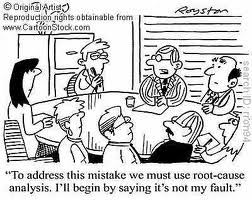 A Dilbert cartoon that I spotted reminded of why I’ve always hated the concept of brainstorming. I went out and did some research and I’m happy to report that I am not alone in my disdain for this sort of problem solving.
A Dilbert cartoon that I spotted reminded of why I’ve always hated the concept of brainstorming. I went out and did some research and I’m happy to report that I am not alone in my disdain for this sort of problem solving.
There are a number of scientific studies out that show it actually produces worse results than do individuals working to solve a problem.
The concept of brainstorming got its start in the 1953 book Applied Imagination. The idea is that a group of people throwing out various ideas eventually creates better solutions than individuals working alone to try to solve issues. Brainstorming has evolved into meaning any sort of meeting in which people try to solve an issue working together, generally by suggesting various solutions to one another.
My hatred, and I’m not using the term lightly, of brainstorming sessions is not a result of any scientific study but simply my own experience. This means that it is completely invalid. Just because I’ve had bad luck with brainstorming sessions doesn’t mean the concept is a failure. It is easy to fall victim to our own personal experiences and assume that because something happened to us, it is the norm.
That’s why I was pleased to read the Dilbert comment and then to find there is research based and empirical evidence to back up my anecdotal evidence.
The arguments against brainstorming that resonated with me include: Blocking wherein one member of the session essentially dominates preventing anyone else from making suggestions, Social Matching in which the members of the group gravitate towards matching the productivity across the group limiting the higher producers, and Illusion of Productivity in which people think they’ve accomplished far more than they actually have.
Almost every brainstorming session in which I’ve taken part essentially devolved into a lot of back-patting generally around ideas that had almost no chance of being implemented because of logistical and financial limitations and the reality of people’s ability to perform.
That being said, I am curious about other people’s anecdotal experiences with brainstorming.
I’m not talking about the euphoric feeling immediately after the brainstorming in which everyone feels like they’ve solved problems but the reality of the solutions derived from those sessions. Were said solutions actually implemented or was it more likely an individual working alone who came up with the best plan?
Tom Liberman
Sword and Sorcery fantasy with a Libertarian Ideology
Current Release: The Spear of the Hunt
Next Release: The Broken Throne

